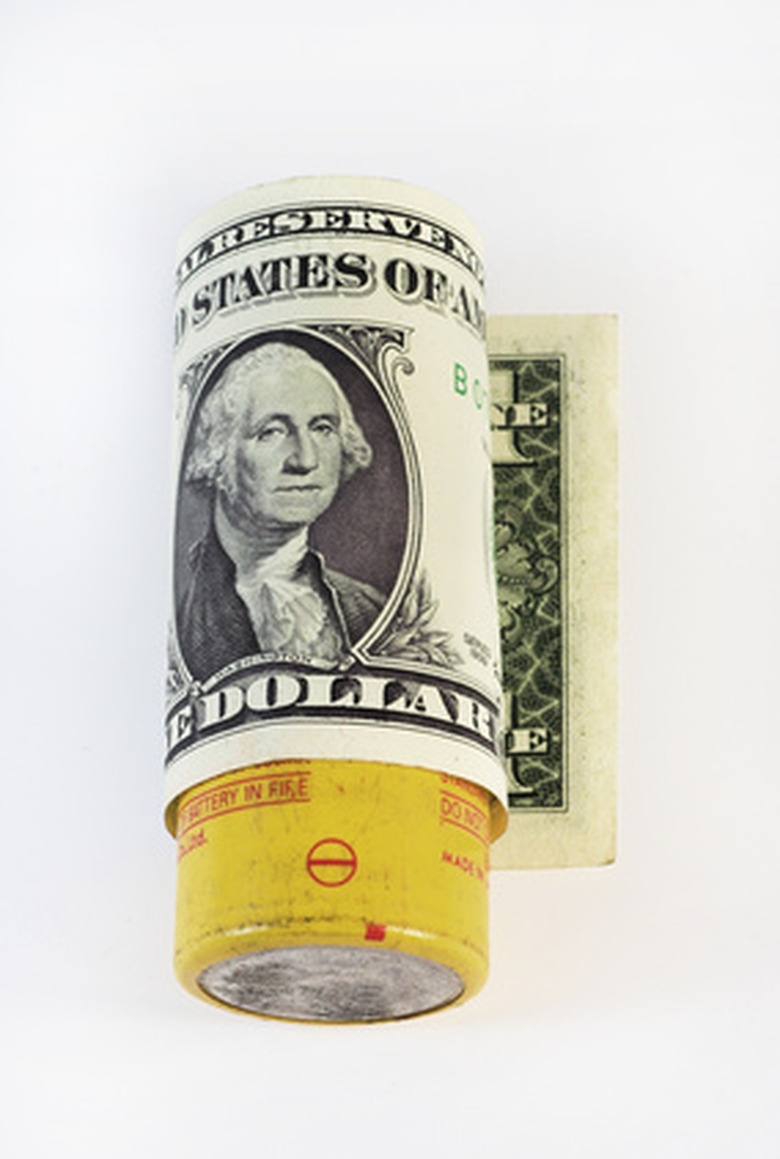Homemade Edison Cell
In 1922, Thomas Edison applied for a patent on a battery that was too good to be a commercial success. The battery used an alkaline, instead of acid, electrolyte. Its performance increased rather than degrading with time. It could be overcharged or discharged completely without damage to the cell. The main problem with this battery was that it would last for 50 years without needing a replacement. Manufacturers stayed away from the idea in great numbers.
Materials
Materials
You can make an Edison cell at home in an hour or so. You will need a 3-by-five inch sheet of nickel and a 3-by-5 inch sheet of iron. A 3-by-5 inch piece of phenolic plastic placed between the iron and nickel will act as an insulator and keep the plates separated. A canning jar with a lid, large enough to hold both plates and the insulator, makes a good container. You will also need distilled water, potassium hydroxide, a Pyrex container, chemical-resistant rubber gloves, eye protection, insulated terminals, 10 inches of copper wire, an electric drill, two small bolts with matching nuts and a soldering iron.
Construction
Construction
Drill a 1/4-inch hole in the upper corner of both metal plates. Cut the 10-inch piece of copper wire in half. Strip 1/2 inch of insulation off both ends of each wire. Attach one end of the first wire to the iron plate by wrapping the end of the wire around the bolt and sliding the bolt through the hole in the plate. Tighten the nut on the backside of the plate. Use the same method to secure the second wire to the nickel plate. Drill two holes in the lid to the jar. Mount the insulated terminals on the lid through the holes. Solder the end of the wire leading to the iron plate to the first terminal. Solder the end of the wire connected to the nickel plate to the second terminal. Set the lid and plate assembly aside.
Electrolyte
Electrolyte
The electrolyte is a 20-percent solution of potassium hydroxide. If you are mixing 1 liter of electrolyte, start with 800 ml of distilled water in a Pyrex container. Slowly add 200 ml of powdered potassium hydroxide and mix. A Pyrex container is necessary because the chemical reaction that occurs while mixing the electrolyte creates a significant amount of heat. Wear gloves and eye protection while mixing.
Assembly
Assembly
Fill the canning jar with electrolyte to a point just below the height of the holes in both plates. Place the phenolic sheet between the two metal plates and place them in the jar. Screw the cap on the jar, and your Edison cell is ready to be charged.
Charging
Charging
The lead attached to the iron plate is the negative terminal. The lead attached to the nickel plate is the positive terminal. Charge the cell by applying a DC current of 50 milliamps or less. If the electrolyte begins to froth, reduce the current.
Cite This Article
MLA
McCuhil, Finn. "Homemade Edison Cell" sciencing.com, https://www.sciencing.com/homemade-edison-cell-5993981/. 24 April 2017.
APA
McCuhil, Finn. (2017, April 24). Homemade Edison Cell. sciencing.com. Retrieved from https://www.sciencing.com/homemade-edison-cell-5993981/
Chicago
McCuhil, Finn. Homemade Edison Cell last modified March 24, 2022. https://www.sciencing.com/homemade-edison-cell-5993981/
